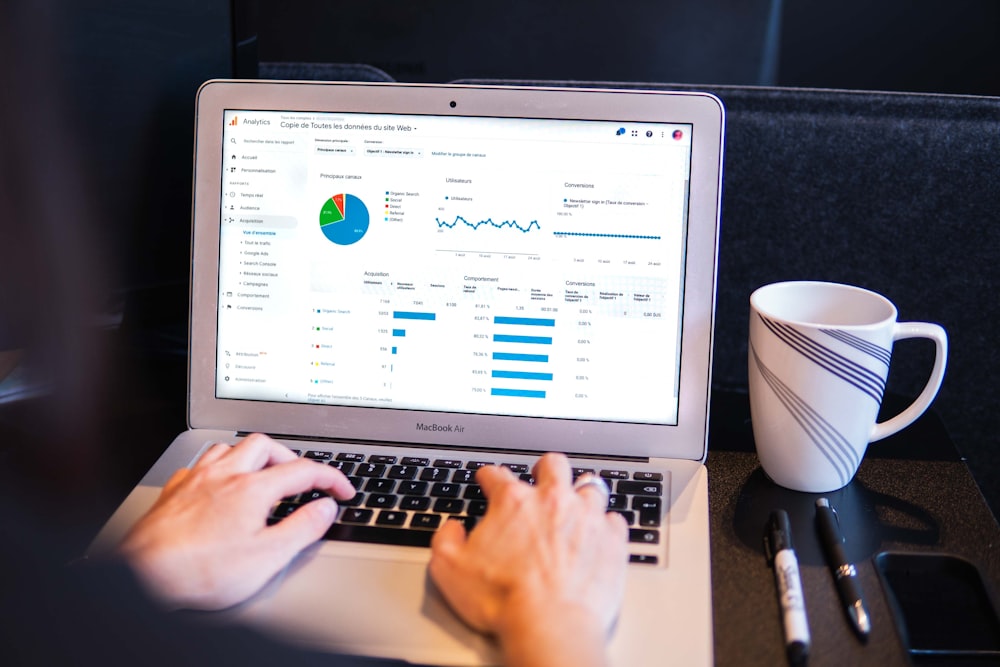SaaS is a popular business model with lots of potential. If you have a SaaS business and are seeking to maximise the impact of your Google Ads campaign, you’re in the right place.
Perhaps your ads have garnered some decent results but you feel you can get more out of your ads budget. Or perhaps you’re looking at your Google Ads page and feel lost, not knowing the best approach to take.
Whether your SaaS company is B2C or B2B, we’ve got your back. This Google Ads guide for SaaS is filled with helpful hints, tips, and best practices for SaaS companies using Google Ads. (Need professional help? Snowball Creations are the leaders for the UK & US market when it comes to paid advertising for SaaS brands)
In the meantime though, I have condensed my many years of SaaS ads experience into this handy guide.
Enjoy!
1. Lay Proper SaaS Groundwork
Before you get into the nitty gritty of Google Ads for SaaS, you need to lay the proper SaaS groundwork. Conversion tracking is the foundation on which your Google Ads campaigns are built. But, to optimise your Google ads correctly, conversion rate tracking needs to be specific and meaningful.
For example, tracking a visit from your landing page to your contact page is not a conversion you should be hoping for from your Google Ads campaign. This could lead to you incorrectly optimising your Google ads and misjudging their performance.
Always have your conversion rate goals in mind. So, instead of tracking the clicks to your contact page, the conversion to track would be completing your contact form. Or, in the case of SaaS companies, you may offer a free trial, free ebook, or a useful newsletter sign-up. A desired conversion will normally involve gathering contact information such as an email address which paves the way for nurturing the contact. Thus, converting potential customers into paying customers.
Jot Down Your Site Conversions
To hone in on your desired conversions, jot down all the possible conversions on your SaaS website. Go through every page and list them. Every piece of conversion data on your website, no matter how small, can be valuable and so is worth gathering.
A good tip is that if you already have Google Analytics goals set up for your SaaS website, you can simply import those into your Google Ads. This will help you keep everything streamlined and cohesive whilst you’re using Google Ads.
Be aware that Google reps often give bad advice on setting goals. A favourite amongst them is setting contact page visits as a goal. This will inevitably lead to data that shows loads of “conversions”. But, those conversions are ultimately not worth much without that all-important customer email address.
2. Google Ads SaaS Keyword Research
You cannot read a Google Ads guide for SaaS companies and not delve into the world of keyword research and match type selection. These are huge topics which could satisfy entire blog posts by themselves. For our purposes, I’m going to cover the one concept that I think is the most valuable when working on your SaaS Google Ads; ‘user intent’.

User intent is quite self-explanatory. It is the intent that a user has when they carry out a Google search. So instead of thinking of it from a robotic and technical point of view, consider what the user is actually looking for in their Google search. For example, what problem do they want to solve?
Your Google Ads focus should be on getting the most return on your ad investment. This means getting the most meaningful clicks possible. In other words, clicks where the user intent closely lines up with your solution. This will lead you to find your target audience. That is, users searching specifically for the SaaS you are offering.
Examples of Full-Intent Keywords For SaaS Companies
Examples of full-intent keywords for SaaS Google ads campaigns can be split into B2B and B2C categories, depending on your product or service. Let’s pretend for a moment you are a SaaS business selling a brilliant new accounting software for charities.
As your target customers are charities, your software will probably need to be low-cost. It will also need to be accurate and simple so that they can use it with minimum fuss.
You want people who are looking for an accounting tool to find it. Not only that though, the ideal user will be in charge of a charity and/or its finances. They will be on the lookout for a tool that closely matches yours, i.e. a cheap, simple, hassle-free solution that does what it says on the tin.
Your keywords can be broken up into complete and incomplete keywords.
Complete keyword examples:
Accounting solutions
Top accounting software
Best accounting tools
As you can see, these keywords are OK but they are not specific enough. Therefore, they are incomplete. Complete keywords are more relevant keywords. They have the user’s full-intent matching up with your value proposition:
Best Accounting solutions for charities
Cheap accounting software
Accounting software for charities
You see how it is narrowed down to describe your software? It doesn’t only describe what it is – accounting software – but also what kind of accounting software it is – cheap, for charities, etc.
If you are a B2C SaaS, you can change this example to software aimed at individuals. For example, personal organisation software aimed at professionals with busy lives.
Top Tip – In essence, a user intent keyword often includes your main valuable offering plus the thing that makes you unique or special.
3. Make The Most of Search
Google Ads offers plenty of campaign options. Depending on your SaaS product or service, you may choose to opt for display ads, video ads, or shopping ads, to name a few.

Before getting stuck into their Google Ads campaign though, you should check that people actually Google your SaaS product. If they don’t, you will want to rethink your marketing strategy. Even though Google will still be useful to your marketing strategy, you may want to consider a display network.
My first mission when working on an ads campaign for a client is to gather important details about their business that will help me to determine which advertising platform is most suitable for it. If I discover that there is not much Googling going on for the solution the business is offering, then LinkedIn Ads or Facebook Ads would normally be better advertising platform options. LinkedIn is ideal for B2B SaaS companies while Facebook is usually more suited to B2C SaaS companies.
If you’re interested in learning more about LinkedIn Ads, I created a video specifically for the topic which you can watch here. I have also created a video all about Facebook ads which you will find here.
The bottom line though is that if users are searching for what you’re offering, you should most definitely get stuck into Google Ads. And, Google Ads Search is the best campaign for a SaaS business.
How Does Google Define a Search Campaign?
Here’s how Google defines search campaigns:
“Search campaigns are text ads on search results that let you reach people while they’re searching on Google for the products and services that you offer.
It’s great for driving sales, leads or traffic to your website, as you can show your ads to people who are actively searching for your products and services.”
How Do We Define a Search Campaign?
There’s a reason why we, at Snowball Creations, opt for search campaigns time and time again. They are our go-to weapon for getting the job done well. Because with a search campaign, there is a very high intent to solve specified problems and at Snowball Creations, we can align this to our clients’ SaaS businesses.
As they are so targeted, search campaigns deliver the highest conversion rates. And while it is a more expensive option than for example YouTube Ads or Google Display Network, you generally get better ROI as the ads tend to be more profitable.
That’s not to say that display ads don’t serve a purpose. As you move from a SaaS startup into a well-established SaaS company, we may decide to use display ads as part of a remarketing strategy as your ads budget grows.
The same principle applies to YouTube Ads. Although it is a fantastic marketing resource for SaaS businesses, we use it secondary to search campaigns.
4. Clicks or Conversions
When you use Google ads for your ad campaign, you will be working with bidding strategies. A bidding strategy is a way to tell Google your bidding preferences. Google Ads involves entering into auctions for an optimum place in search results. You must optimise your ads to get the best results possible and win your place in a Google search.

As a SaaS company, you will probably aim for conversions like filling in a form on your contact page. This will increase your number of qualified leads for your email marketing campaigns. Naturally, you may come to the conclusion that it’s best to focus your bidding strategy entirely on conversions. However, this is not necessarily the case and is the downfall of many young SaaS companies that are new to Google Ads.
And unfortunately, Google itself will recommend companies work on a conversion-focused campaign time and again.
You Need Data For Conversion Bidding
The bottom line is that Google’s algorithm uses existing conversion data to replicate its success. If you have no conversion data, to begin with, then Google has nothing to get the ball rolling.
For this reason, I would recommend newbies begin with ‘maximise clicks’ instead. Run this for a month to get lots of traffic to your landing pages. Clicks can lead to conversions. Offering incentives like free trials can help speed this along. Once you’ve built up your conversion rate and gathered plenty of data, you can begin thinking of a conversion-based bidding strategy as Google has data to work off. And obviously, the bigger your budget, the quicker you can make this happen.
If you’re a B2B or B2C SaaS company that has a set pricing structure, for example, £50/month, then a ‘maximise conversions’ strategy is your best bet, after the initial data gathering period. This is because your aim is to get as many signups as possible; simple.
With time, you can add other targets and criteria to your bidding strategies too. For the example above, I recommend adding a target Cost Per Acquisition. This will give Google a figure to aim for that matches your desired profit.
For SaaS businesses that have a varied pricing structure, ‘maximise conversion value’ might be the better way to go. This focuses on the value of your conversions rather than the number of conversions.
If, for example, your SaaS product has three pricing tiers; £20, £200, and £2000, then Google will deem the £2000 sign-up more valuable than the £20 sign-up. Thus, Google will give it more weight.
5. Let’s Talk About Ad Groups
Structuring ad groups correctly is a vital, yet often overlooked aspect of setting up search campaigns. If you’re allocating the majority of your ad budget to search campaigns as I’ve recommended, poor ad group structuring can lead to a lot of wasted money.
So what is an ad group?
Basically, an ad group is a group of keywords allocated to a specific ad. They need to be relevant to the ad copy.
You first use Google Ads Keyword Planner to hone in on your complete intent keywords. Once you’ve established the keywords that will help you reach your target audience, group them into ad groups.
This is an organisational method which helps you match keywords to search intent and your ad copy. The result is highly targeted ads with high CTRs (Click-Through Rates). In turn, Google will recognise the quality of your ads, thus boosting your quality scores. And, better still, reduce your Cost Per Click.
Copywriting is Key in a Google Ads Campaign
Copywriting is one of the most vital aspects of your Google ads campaigns. Ads need to be written with your keywords in mind. Not only that though, also your ad copy needs to be persuasive enough to entice a click.
I could write a whole guide on copywriting, it’s such a huge, in-depth topic. For now though, you need to focus on a few core principles to get your ads off the ground. These can include:
Ad headlines need to match an ad group topic and be relevant to the keywords.
Consider the benefits of your SaaS product – remember SaaS competition is high!
Communicate the value of what you’re offering new customers.
Identify pain points that potential customers may have and why your SaaS product can help.
Share what makes you stand out from competitors; lower price, unique features, etc.
In short, your ad copy should convince users to click through to your landing page. To do this you have to give compelling reasons. However, with ad copy, you only have a small amount of space to do this so you have to be concise.
Set Up Options For A/B Testing
Use all the headline and description spaces available to maximise the responsive search. In addition to this, at Snowball Creations, we usually create two of these ads per ad group so that we can set up our own A/B testing. This is separate from Google’s testing.
7. Think Positively About Negative Keywords
It’s time for some tough love.
If you’re working with Google ads and you haven’t got a clue what negative keywords are or how to use them, your ads are falling short.
There, I said it.

When you don’t use negative keywords, you risk wasting money on ads that show up in irrelevant searches. CPC is high in the technology sector, particularly for B2B SaaS companies as the competition is so fierce. You could be wasting up to £50 per bad search.
However, it’s worth mentioning that B2B SaaS conversion values tend to be higher than B2C because it is aimed at an entire business rather than one person. So, although B2B SaaS lead generation may cost more, it can also be more profitable.
That said, wasted clicks are never profitable. And the good news is it’s pretty easy to minimise them.
Examples of Negative Keywords
Let’s go back to our earlier example of accounting software for charities. As a SaaS business, we decide to set up our broad match keyword; ‘accounting software’.
This broad match keyword could place you in searches for terms like “jobs in accounting” and “how to build accounting software”. Neither of these is relevant to your product and could therefore generate wasted clicks.
You can bypass this problem by checking “search terms” in Google Ads on a regular basis. Here, you can add negative keywords. These are keywords that you don’t want to be associated with your ads. For example, “how to” and “jobs”. This helps Google place your ads in front of more relevant users, thus helping you to budget better.
Top Tip: This is another example of boosting your CTR, increasing your quality score, and decreasing your CPC.
8. Give The Bots a Hand
Let’s recap everything you’ve done so far:
You’ve expertly aligned your tracking with your campaign goals.
You’ve got your brilliant selection of full-intent, relevant keywords.
You’ve organised your campaigns with ad groups according to intent and bidding method.
You’ve written compelling and persuasive ad copy that will entice clicks from your target audience.
You’ve allocated negative keywords so that you minimise the chance of showing up in bad searches.
Phew!
But, your work doesn’t end there.
Running Google ads to generate leads for your SaaS company, you are playing the long game. You will refine your ads over time, building campaigns that will bring stable traffic, leads, and conversions to your business. Your strategy will help you place your software in front of new customers. Done correctly, your marketing campaign will turn into a well-oiled machine.
As you continue on your Google Ads journey for your SaaS company, you can weed out the bad bits and reinforce the good bits. You will gradually gain more insights from your google search campaigns with the data you gather. And of course, there are lots of other things to consider for your SaaS campaigns. For example, factoring in locations, days and times, and devices.
Hopefully, this guide has given you a solid foundation for using Google Ads and launching your SaaS campaigns.
If you need more help with your search ads, I’m always here to talk through your options. We can build new campaigns, or look over your existing campaigns to identify any weak links in your ad infrastructure that may be putting potential new customers off.
Get in touch whenever you’re ready!
If you’ve found this guide useful, please also consider sharing it. The more the merrier!

